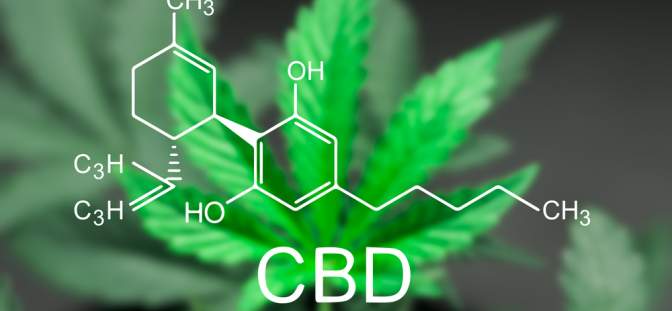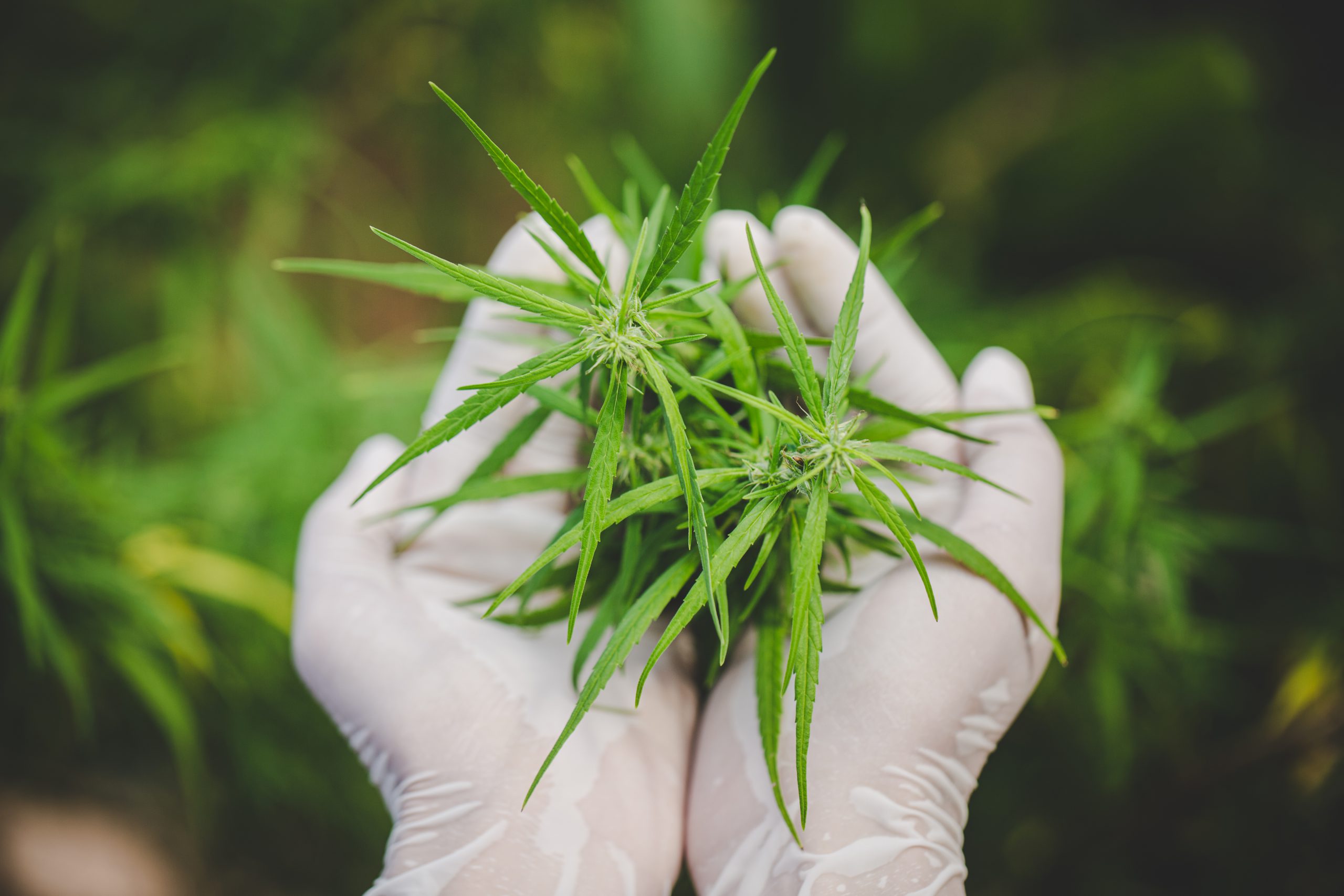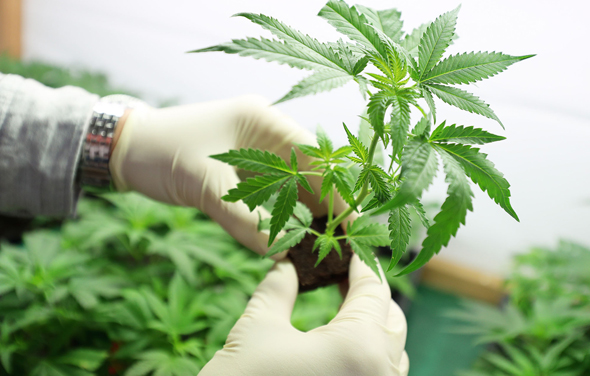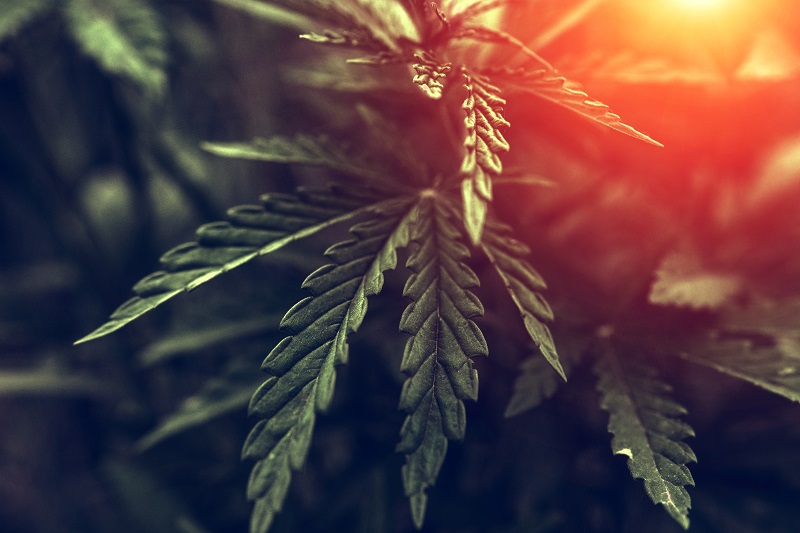CBD as a Treatment for Acne

Introduction
In an earlier article we looked at the benefits of using CBD integrated cosmetics as part of your daily skin care routine. (You can review that article here.) One area that was briefly discussed was using products such as a CBD Cleansing Balm or a CBD Sleeping Mask as a potential treatment for acne. In this article we will take an in depth look at how CBD reacts with the endocannabinoid system in your skin and review several studies that provide evidence why CBD integrated products may be the answer to reducing or even eliminating unsightly blemishes on your face. If you suffer with acne or you want to take steps to having a more radiant complexion, read on.
The Endocannabinoid System
Throughout our body runs a complex cell-signaling system known as the Endocannabinoid System (ECS) which was identified in the early 1990s. (1)The ECS plays a crucial role in regulating homeostasis or balance in the body. When the body’s levels are balanced, the body is healthy but when they become unbalanced it leads to health problems.
“Two eminent scientists at the NIH said that the endocannabinoid system is involved in essentially all human disease,” said Mechoulam. “This is a very strong statement, but it seems to be correct. Today we know that the endocannabinoid system—the receptors, the endocannabinoids, the enzymes that form and break down the endocannabinoids—are involved in many physiological reactions, and therefore in many disease states.”
– Raphael Mechoulam (at the 13th European Congress on Epileptology in August 2018.) (2)
Endocannabinoids (such as anandamide (AEA), 2-Arachidonoylglycerol (2-AG), and N-arachidonoyl dopamine( NADA) assist in regulating virtually every single physiological system in the body by binding with cannabinoid receptors when they are required. However, they are what are known as retrograde messengers. They travel in the opposite direction as traditional neurotransmitters such as Dopamine which is released from the presynaptic cell, travels across the synapse and attaches itself to the postsynaptic cell, delivering whatever message it is carrying. Endocannabinoids are synthesized on demand, and travel backward from the postsynaptic cell to the presynaptic cell, telling the presynaptic cell to slow down or altogether stop releasing whatever neurotransmitters or hormones are active at the time. Endocannabinoids function as a flow-control mechanism and are rapidly broken down by enzymes once they have performed their job.(3)
Understanding CBD
CBD is short for Cannabidiol, one of more than 100 phytocannabinoids that can be extracted from the Cannabis sativa plant. (You can read a detailed discussion on CBD here.) While the endocannabinoids produced by our body have very specific functions, the cannabinoid CBD reacts with the Endocannabinoid System (ECS) in a wide variety of ways. Depending on the need at the time, it is believed that CBD can promote or inhibit neurotransmitters from binding with their receptors or slow down the process of enzymes breaking down the endocannabinoids at work in the system or inhibit the response of immune cells.
For example, when we feel anxious or stressed our body releases a surge of hormones including adrenaline and cortisol. Adrenaline increases our heart rate, breathing and carbohydrate metabolism to provide extra energy for our muscles. Cortisol increases sugars (glucose) in the bloodstream, enhances your brain’s use of glucose and increases the availability of substances that repair tissues. It triggers the mental state of feeling stressed, whereas adrenaline prepares the body for action; the “fight or flight” response.
In 1993 at the University of São Paulo, Brazil, a double blind study was conducted on humans to determine if there was a reduction of cortisol in the blood after taking CBD. The sessions consisted of blood collection and application of self-evaluation scales before and after drug injection. Hormonal measurements were performed by radioimmunoassay. The tests revealed a significant reduction in cortisol after injection of CBD, but no change in the Placebo group. In addition, the participants taking the CBD reported a feeling of calm on their self-evaluations. The results of the study suggest that CBD is able to interrupt the signal instructing the body to secrete cortisol. (4)
With more and more studies being conducted on how CBD and other cannabinoids interact with the ECS the potential to treat a wide variety of medical conditions is emerging. The ECS has turned out to hold tremendous therapeutic potential for a multitude of diseases and pathological conditions affecting humans, ranging from inflammatory, neurodegenerative, gastrointestinal, liver, cardiovascular disorders and obesity, to ischemia/reperfusion injury, cancer and pain. (5)
For the purposes of this article we will focus on how CBD can assist in regulating the activity of the ECS in the skin, providing a potentially effective treatment for acne as well as other skin conditions.
CBD and Our Skin
Our skin has three major layers: 1) Epidermis; 2) Dermis; 3)Hypodermis.
Recent studies suggest the existence of a functional ECS in the skin.The research implies it regulates various biological processes (e.g. proliferation, growth, differentiation, apoptosis and cytokine, mediator or hormone production of various cell types of the skin and appendages, such as the hair follicle and sebaceous gland. (6)
It seems that the main physiological function of the cutaneous ECS is to maintain the proper and well-balanced creation, differentiation and survival, immunity and/or tolerance, of skin cells. The disruption of which may facilitate the development of multiple pathological conditions and diseases of the skin (e.g. acne, seborrhea, allergic dermatitis, itch and pain, psoriasis, hair growth disorders, systemic sclerosis and cancer). (6)
What Does Science Say About CBD as a Treatment for Acne?
In the last ten years numerous studies have been conducted on the effects of CBD on human skin samples. Some of the most promising studies are coming out of the University of Debrecen (Hungary). In 2009 Tamas Biro, a member the Department of Physiology and Research Center for Molecular Medicine, gave a talk at a meeting of the International Cannabinoid Research Society (ICRS). His talk, talk entitled “Cannabidiol as a Novel Anti-Acne Agent? CBD Inhibits Lipid Synthesis and induces Cell Death in Human Sebaceous Gland-Derived Sebocytes.” discussed the most recent findings of the research team he belongs to.
Acne is a condition that occurs when excess oil, dirt, and dead skin cells clog pores. The bacteria Propionibacterium acnes can build up in the pores, causing red blemishes. The excess oil is a result of the overproduction of sebum, a lipid (oily substance) excreted by the sebaceous glands to create waterproofing of the skin. It has been learned in recent years that the sebaceous glands and hair follicles (which also produce oil) have endocannabinoid receptors, as do the surface cells (keratinocytes) of the skin. (7)
During his discussion of their research, Biro explained that when endocannabinoids were applied to cells derived from human sebaceous glands the CB2 receptors began dramatically “upregulating” lipid production. By blocking the endocannabinoids with an antagonist drug they were able to dramatically suppress lipid production. The results of these experiments suggested that endocannabinoids were important in lipid production in the sebaceous glands and led to further tests, this time applying CBD to cells that had received the endocannabinoid anandamide to trigger lipid production. The anticipated result was that the CBD, a cannabinoid similar to those created in the body, would accelerate lipid production; however, the researchers were surprised to find that exactly the opposite occurred. They discovered that CBD did not stimulate lipid synthesis, but rather inhibited it, especially if the lipid synthesis was previously upregulated, as for example in acne.
The conclusion was that CBD has the potential to be an effective inhibitor in the production of sebum (lipids) thereby reducing the advancement of acne.
In 2014 the team at the University of Debrecen published another study titled, “Cannabidiol exerts sebostatic and antiinflammatory effects on human sebocytes”. The research conducted in this study involved in vitro and in vivo tests on human sebocytes. The results of the extensive research conducted are perhaps the most promising evidence to support CBD as a treatment for acne.
The study provides the first evidence that CBD demonstrated a unique “trinity of cellular anti-acne actions.” Specifically, without compromising viability, CBD (1) normalized the pathologically elevated lipogenesis induced by “pro-acne” agents, both in a quantitative and qualitative manner (universal lipostatic effect); (2) suppressed cell proliferation (antiproliferative effect); and (3) prevented the actions “pro-acne” agents to elevate proinflammatory cytokine levels (universal antiinflammatory effect). Furthermore, the study demonstrated that the sebostatic actions of CBD were duplicated under “in vivo–like” conditions.
Collectively the data promotes the phytocannabinoid CBD as a potent “universal” anti-acne agent, possessing a unique “triple anti-acne” profile. Multiple human studies have already CBD to have minimal side effects. Furthermore, it is already in use in many countries in clinical practice without any significant side effects (Sativex and Epidiolex). This is particularly exciting because the currently available, most effective anti-acne agent, isotretinoin, is known to cause serious side effects (8, 9, 10). These data, together with our current findings, point to a promising, cost-effective, and, likely, well-tolerated new strategy for treating acne vulgaris, the most common human skin disease.
The study authors note that “ …one should keep in mind the possibility of the topical administration. Although the levels of CBD seen in the plasma of patients receiving Sativex are below the CBD doses that exerted the most robust effects in our studies, such doses could easily be achieved after topical CBD application, using appropriate vehicles already used in current standard acne management. Due to its high lipophilicity, CBD is expected to preferentially enter the skin via the transfollicular route and to accumulate in the sebaceous gland. (5)
Conclusion
Although clinical studies still need to be conducted to verify the potential of CBD as a treatment for acne, it seems consumers may beat science to it. Skin care and cosmetics manufacturers are putting CBD in a plethora of products to meet consumer demand. Already, consumers are posting before and after pictures showing how CBD has helped their acne.
It is important to remember that although the results of these studies are encouraging, there are other factors which contribute to the advancement of acne.
- Genetics
- Diet
- Stress
- Hygene
- Bacteria
- Poor quality skin care and cosmetics products
If you decide to try CBD infused products it is important to use quality products and at the same time watch what you eat, try to reduce stress and wash your face regularly. Products such as CBD Cleansing Balm or CBD Recovery Lotion along with CBD Sleeping Mask and CBD Beauty Serum may be the answer to help fight your acne and to restore your radiant complexion. InnoCan Pharma TM is skilled in the development of pharmaceutical dermal products that combine CBD synergistically with high quality ingredients proven to be effective for various skin conditions and are approved by the FDA.
References Used for this Article
(1) https://www.labroots.com/trending/cannabis-sciences/8456/endocannabinoid-system-discovered
(3) https://www.ncbi.nlm.nih.gov/pubmed/12498988
(4)https://www.ncbi.nlm.nih.gov/pubmed/8257923
(5) https://www.ncbi.nlm.nih.gov/pmc/articles/PMC4151231/
(6) https://www.ncbi.nlm.nih.gov/pmc/articles/PMC2757311/
(7) https://www.beyondthc.com/wp-content/uploads/2013/08/CBD-for-Acne.pdf
(8) https://www.ncbi.nlm.nih.gov/pubmed/19555434
(9) https://www.ncbi.nlm.nih.gov/pubmed/11606947
(10) https://www.ncbi.nlm.nih.gov/pubmed/20082946
More articles:










